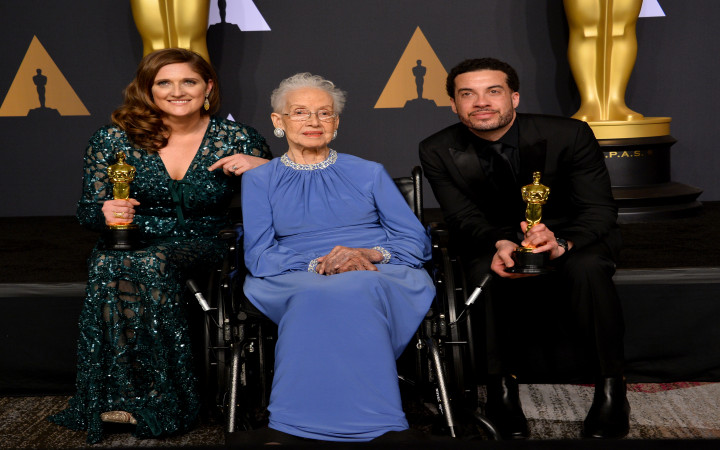Today’s Wonder of the Day was inspired by Christie. Christie Wonders, “Who was Katherine Johnson?” Thanks for WONDERing with us, Christie!
On July 20, 1969, human beings landed on the Moon. Most people have heard a few of the names connected to this success. You might already know about the astronauts Neil Armstrong and Buzz Aldrin. But have you heard of Katherine Johnson?
Who was Katherine Johnson? She was one of the people who worked to make the Moon landing happen. As a Black woman working in the field of mathematics in the mid-1900s, Johnson broke many .
Katherine Johnson was born on August 26, 1918. She grew up in West Virginia. As a young child, Johnson liked to count. In school, this turned into a deep love for math.
Johnson was an excellent student and moved quickly through school. In fact, she started high school at only 10 years old! In college, she quickly took every single math class her school offered. Johnson graduated with degrees in mathematics and French from West Virginia University in 1937. She was only 18.
After college, Johnson became a teacher. Then, in 1940, West Virginia ended segregation in its schools. Katherine Johnson became one of the first three Black students to enter graduate school at West Virginia University. Soon, though, she and her husband learned that they were going to have a child. Johnson left school. The couple then moved to Marion, Virginia.
For the next decade, Johnson focused on her family. She also worked as a teacher. In 1952, she learned that the National Advisory Committee for Aeronautics (later called NASA) was hiring. It was looking for Black women with experience in math to work as computers.
You may be WONDERing how a person can be a computer. After all, today’s computers are machines. They’re advanced pieces of technology people use for school, work, and entertainment. However, at that time, computers were people. Their job was to solve important math problems.
In Johnson’s case, she solved math problems that helped NASA send people into space. Soon after starting her job, Johnson became part of NASA’s Flight Research Division. She was the only Black person in the department.
Segregation still existed in NASA at that time. For example, people of different colors had to use separate restrooms. In fact, it was Johnson who brought around the end of this rule. She was the first person of color to use a formerly white-only restroom.
Race wasn’t the only factor used for separation—people of different genders often had to work in separate rooms. When Johnson went to meetings with her male colleagues, it caused quite the stir. However, she pointed out that there were no rules against men and women going to the same meetings.
Soon, Katherine Johnson became one of the most talented and respected human computers at NASA. She calculated the path for America’s first human spaceflight in 1961. The next year, John Glenn asked her to calculate his orbit around the Earth.
Johnson was a key member of the team that determined the trajectory of the Apollo 11 mission. It took humans to the Moon in 1969. However, it would be many years before the public learned about her work.
In 2016, the movie “Hidden Figures” told Johnson’s story. The film made many more people aware of Johnson’s contributions, as well as those of her colleagues Dorothy Vaughan and Mary Jackson.
President Barack Obama awarded Katherine Johnson with the Medal of Freedom in 2015. The next year, NASA dedicated the Katherine G. Johnson Computational Research Facility to her. In 2020, Johnson passed away at the age of 101.
Today, people around the world remember Katherine Johnson’s accomplishments. Her work led to major strides in the world’s understanding of space.
Standards: CCRA.R.4, CCRA.L.3, CCRA.L.6, CCRA.R.10, CCRA.R.1, CCRA.SL.2, CCRA.L.1, CCRA.R.2, CCRA.W.1, CCRA.SL.1, CCRA.L.2




